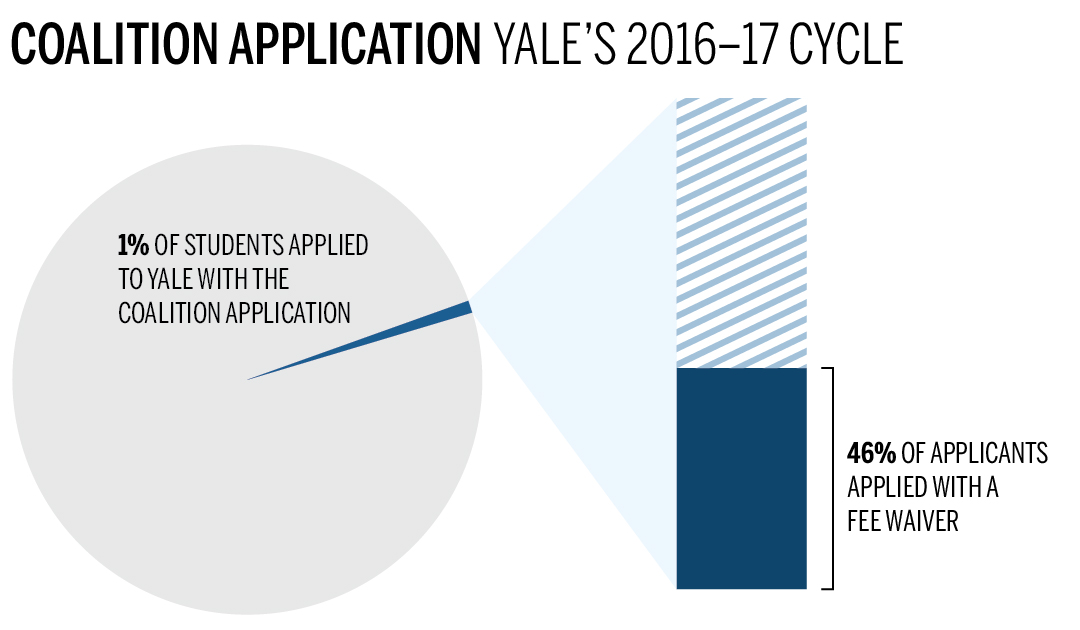
This year, 317 students applied to Yale using the Coalition Application, a new application which opened to prospective students last summer and which the University accepted in 2016-17 for the first time.
Yale is one of about 100 elite colleges called the Coalition for Access, Affordability, and Success piloting the Coalition Application this year in an effort to better reach high-achieving, low-income applicants. This year is the first that Yale has accepted two applications — the Coalition Application and the QuestBridge Application — in addition to the Common Application.
“Members of the Admissions Office Staff and Yale’s Committee on Financial Aid and Admissions will be doing a full review and evaluation of our first year experience with the Coalition Application this spring and summer, but I can say that admissions officers were satisfied with the experience of accepting the Coalition Application as one of three ways to apply to Yale this year,” Dean of Undergraduate Admissions Jeremiah Quinlan. Quinlan serves on the board of directors for the Coalition.
About one third of Coalition applications to Yale came from high schools in Florida, where the University of Florida’s decision to accept only the Coalition Application likely boosted the number of users in the state, according to Quinlan.
Quinlan said he was encouraged to see a high proportion of Coalition applicants apply with a fee waiver, which he saw as a reflection of the Coalition’s mission to improve access to schools with generous need-based financial aid and high graduation rates. A total of 46 percent of applicants submitting a Coalition Application to Yale applied with a fee waiver, as compared to the 31 percent of applicants who apply with a fee waiver in the overall freshman applicant pool.
The Coalition announced the new application initiative in September 2015. The portal mostly mirrors the Common Application, except for one section of Yale-specific questions. On the Common Application, students are required to write two short essays, 250 words each, from three topics offered.
On the Coalition application, however, students are asked to upload a media file and explain their submission in 250 words or fewer. The two topics for the selection of this media file and reflection were similar to the three prompts given on the Common Application.
“In a number of cases, the media component of the Coalition Application was especially helpful in providing context for something an applicant shared in another part of the application,” Quinlan said. “The Admissions Committee found it illuminating to review the media item in tandem with the written reflection during our deliberations.”
No preference was given for any of the three application channels, according to the Yale Office of Undergraduate Admissions. On the Yale admissions website, the office also explains that applicants who are more inclined to submit an audio file, document, image or video as part of their application in lieu of responding to a short essay prompt might find the Coalition Application to be a better option.
In total, 49,000 students filed an application using the Coalition platform this year, according to Annie Reznik, executive director of the Coalition. Reznik said the Coalition’s focus for the upcoming year will be centered around early engagement to increase the number of underserved students in 9th and 10th grade using the Coalition’s resources.
“It’s a great start,” Reznik said. “We know that there will be more students using the Coalition application next year simply by virtue of adding more schools who will accept the application.”







